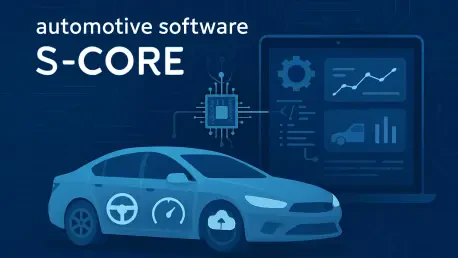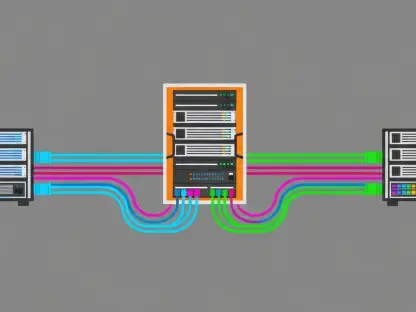In an era where software-defined vehicles (SDVs) are reshaping the automotive landscape, a persistent challenge looms large: the fragmentation of proprietary middleware stacks that carmakers and suppliers have long relied upon, leading to skyrocketing costs and compatibility headaches. Enter Eclipse S-CORE, an open-source middleware core designed to unify safety-critical software for modern vehicles. The recent 0.5-alpha release marks a pivotal milestone in this journey, offering a standardized foundation that bridges the gap between operating systems and automotive applications. By managing essential functions like communication, data flows, and safety logic, S-CORE promises a consistent and interoperable platform. This development signals a potential turning point for an industry grappling with inefficiencies, as it paves the way for collaborative innovation over isolated, bespoke solutions. The implications of this release extend far beyond code, hinting at a future where automakers can streamline development and focus on delivering cutting-edge vehicle experiences.
Tackling Industry Fragmentation
The automotive sector has long been bogged down by a patchwork of proprietary middleware systems, each developed in silos by individual manufacturers and suppliers, resulting in redundant efforts and incompatible frameworks. Eclipse S-CORE, with its 0.5-alpha release, steps in as a game-changer by proposing a unified, open-source alternative. Positioned as a middleware layer for high-performance vehicle computers (HPCs), it handles critical tasks such as communication and execution control while ensuring safety logic remains intact. This release showcases a shared architecture for vital systems like driver assistance and powertrain control, where predictable performance isn’t just desired but essential. By providing a collaborative codebase, S-CORE aims to slash development timelines and curb the wasteful repetition of engineering efforts, allowing original equipment manufacturers (OEMs) and suppliers to channel resources into innovation rather than reinvention.
Beyond merely addressing technical incompatibilities, S-CORE’s approach fosters a cultural shift within the industry toward collective problem-solving. The platform’s design as a middleware core independent of specific hardware or operating systems means it can adapt to diverse automotive environments, making it a versatile tool for widespread adoption. Its deterministic orchestration of mixed-criticality workloads ensures that safety-critical functions operate without hiccups, even under demanding conditions. Moreover, the declarative model embedded in this release simplifies complex processes like timing and error management, offering clarity in how cause-effect chains are handled. This not only enhances reliability but also builds trust among stakeholders who have historically been wary of open-source solutions in safety-sensitive domains. The broader vision here is clear: a standardized framework can accelerate the rollout of software-defined vehicles while upholding the stringent safety standards that define the sector.
Driving Standardization and Collaboration
A growing consensus within the automotive industry underscores the urgent need for standardization to streamline software development for SDVs, and Eclipse S-CORE is at the forefront of this movement. Spearheaded by the Eclipse Software Defined Vehicle Working Group, the project reflects a unified push to replace custom, proprietary solutions with a common, open-source framework that prioritizes both safety and compatibility. The 0.5-alpha release embodies this ethos by delivering a platform that not only meets technical benchmarks but also encourages collaboration over competition. This shift is poised to redefine how automakers approach software architecture, cutting costs and boosting efficiency across the board. As more players rally behind this initiative, the potential for faster innovation cycles becomes tangible, ensuring that safety-critical systems evolve without sacrificing reliability or performance.
Significant contributions from key industry players further amplify S-CORE’s impact, with companies like Qorix playing a central role in its development. As a founding member, Qorix has driven the creation of the orchestration module, a cornerstone of the platform’s ability to manage deterministic runtime control and mixed-criticality workloads. Their declarative model breaks down intricate tasks by clearly mapping out timing constraints and error-handling protocols, making the software practical for real-world automotive hardware. Additionally, Qorix’s efforts to commercialize S-CORE through a Performance Distribution add long-term support, hardened components, and cybersecurity services, proving that open-source middleware can be production-ready. This dual focus on technical excellence and practical implementation highlights how collaborative efforts can balance innovation with the commercial realities faced by automakers and suppliers in a rapidly evolving market.
Building a Unified Future
Reflecting on the strides made with the Eclipse S-CORE 0.5-alpha release, it’s evident that the automotive industry has taken a significant step forward in addressing the inefficiencies of fragmented software systems. This milestone lays the groundwork for a shared platform that enhances interoperability and minimizes redundant development efforts. The strong backing from industry collaborators and the technical contributions from entities like Qorix underscore a commitment to blending open-source principles with the rigorous demands of safety-critical applications. Looking ahead, the focus should shift to expanding adoption across more manufacturers and suppliers, ensuring that the middleware evolves through real-world testing and feedback. Prioritizing integration with emerging technologies and maintaining robust cybersecurity measures will be crucial next steps. As the journey continues, the vision of a cohesive software ecosystem for software-defined vehicles remains within reach, promising a more efficient and innovative automotive landscape for years to come.









